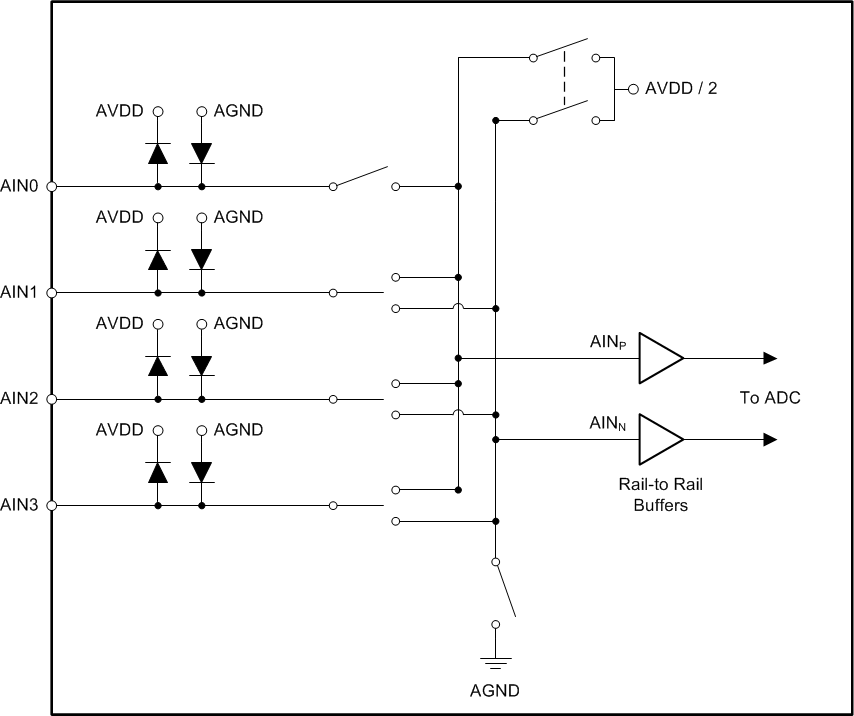SBAS924A July 2018 – November 2018 ADS1219
PRODUCTION DATA.
- 1 Features
- 2 Applications
- 3 Description
- 4 Revision History
- 5 Pin Configuration and Functions
- 6 Specifications
- 7 Parameter Measurement Information
- 8 Detailed Description
- 9 Application and Implementation
- 10Power Supply Recommendations
- 11Layout
- 12Device and Documentation Support
- 13Mechanical, Packaging, and Orderable Information
Package Options
Mechanical Data (Package|Pins)
Thermal pad, mechanical data (Package|Pins)
- RTE|16
Orderable Information
8.3.1 Multiplexer
Figure 27 shows the flexible input multiplexer of the device. Either four single-ended signals, two differential signals, or a combination of two single-ended signals and one differential signal can be measured. The positive (AINP) and negative (AINN) inputs selected for measurement are configured by three bits (MUX[2:0]) in the configuration register. When single-ended signals need to be measured, the negative ADC input (AINN) can internally be connected to AGND by a switch within the multiplexer.
 Figure 27. Analog Input Multiplexer
Figure 27. Analog Input Multiplexer Electrostatic discharge (ESD) diodes to AVDD and AGND protect the inputs. The absolute voltage on any input must stay within the range provided by Equation 3 to prevent the ESD diodes from turning on:
If the voltages on the input pins have any potential to violate these conditions, external Schottky clamp diodes or series resistors may be required to limit the input current to safe values (see the Absolute Maximum Ratings table). Overdriving an unused input on the device can affect conversions taking place on other input pins.